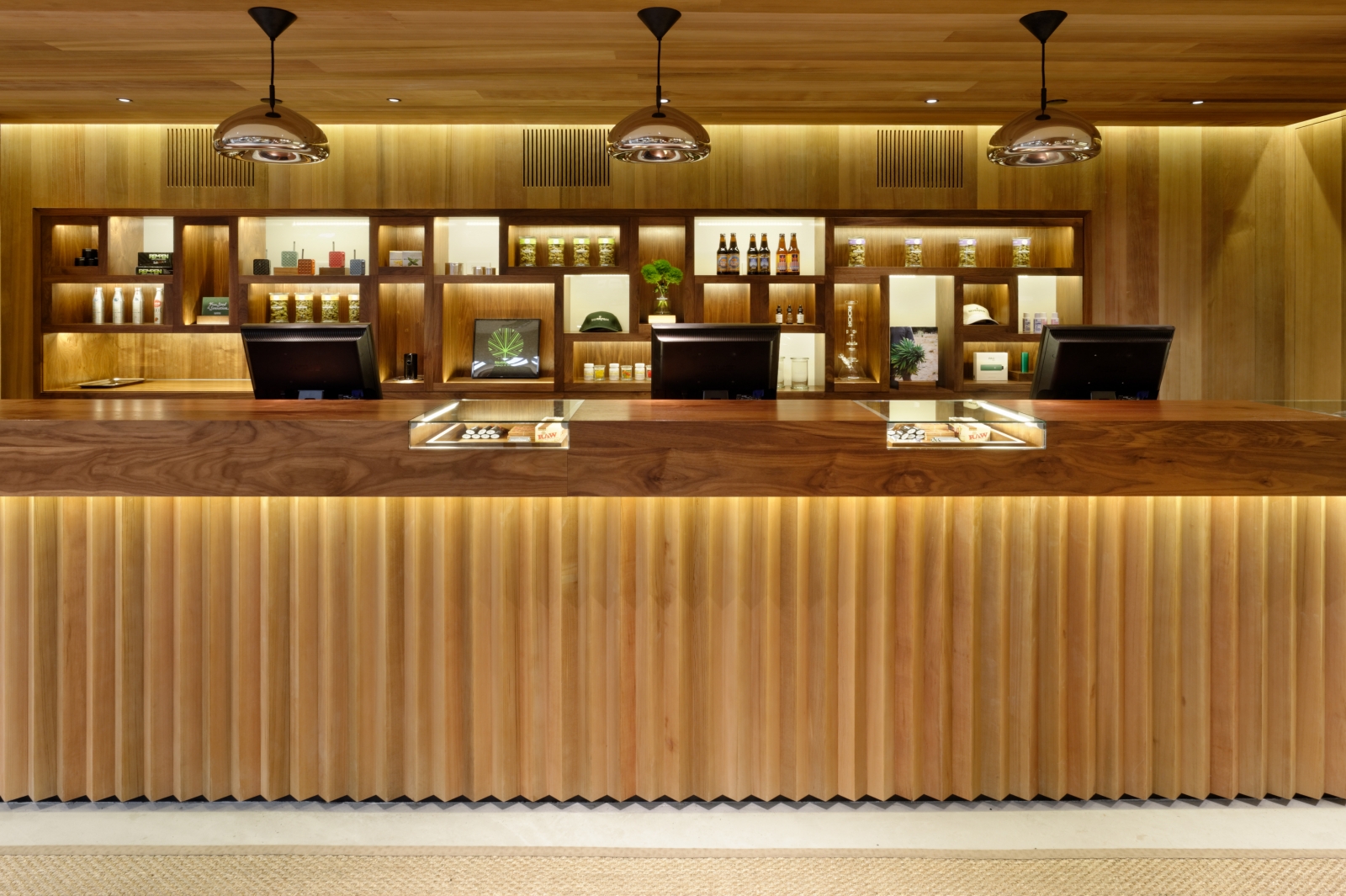
February 16, 2016
Different Tokes for Different Folks
Ganja at the Gap? As legalized marijuana sweeps across the nation, dispensaries step up their game.

Aspen-based Silverpeak pioneers a new look for the marijuana industry: sleek and inviting, with nary a hint of tie-dye in sight.
All photography courtesy Michael Brands/Mountain Home Photo
“Things are definitely becoming more modern looking,” says Dan Skye, editor in chief of High Times, the 42-year-old bible for the cannabis-smoking community. “No more Cheech and Chong posters. There are stores in the suburbs that look like the Gap.” Skye is referring to marijuana dispensaries, a business sector that is rapidly growing as legalization creeps across the United States (recreational marijuana is currently legal in Alaska, Colorado, Oregon, Washington, and the District of Columbia, while medicinal marijuana is legal in 19 states). Since Skye has patronized his share of these outlets—by his estimate, that number is somewhere in the hundreds—he’s in a position to know that most dispensaries no longer look like your grandmother’s head shop. “They are either clinical or fun,” he says.
Dispensaries do seem to resemble either a dentist’s office or a swanky tobacconist. Silverpeak in Aspen, Colorado, is in the latter group. Developed by Tanagram Design, an architectural firm headquartered in Buenos Aires, the store features a warm wood interior accented with backlit displays of the plant and all its incarnations. “The days of nervous purchases in clandestine places are over,” says Javier Jarak, a partner at Tanagram Design. “We wanted to stay away from all the clichés of the industry.” The designers wanted to appeal to a broader population that includes not only experienced users but also the cannabis curious, so they made the store look welcoming. Tanagram also turned complicated state regulations about how marijuana should be displayed and accessed to its advantage, using the glass-covered tabletops to enhance the atmosphere of luxury. “We also developed an e-commerce-type dedicated app that turns each salesperson into a point of sale,” says Jarak, making for “an easy interaction that makes the experience personalized and enjoyable.”
Meanwhile, in California, where smoking marijuana is not considered a crime but only medicinal marijuana is legal, shops generally adopt a wellness approach. “Every day people come into our dispensary on one of the worst days of their life: they’ve just begun chemotherapy or received a new diagnosis,” says Ryan Hudson, cofounder and executive director of San Francisco’s The Apothecarium, which is opening a second store in the city and another in Las Vegas. “They need help and compassion. We want our space to put them at ease and inspire confidence.” Hudson installed flocked wallpaper and chandeliers to reflect the historic storefront, then contrasted the Victorian vibe with acrylic chairs to give the interior a more modern feel.
As the industry grows, so will experimentation in dispensary design. “You’ll have the seniors coming in with their aches and pains,” says Skye. And many who are new to the product will have to be educated, which requires patience. “In 2014, when marijuana became commercially available in Colorado,” Skye recalls, “people were trying to decide which strain they wanted, indica or sativa. They would take forever at the counter trying to figure it out.”

Silverpeak is of a new class of dispensaries, which feel like swanky tobacconist shop.

The architects used warm wood paneling and glass display cases to enhance the atmosphere of luxury.






